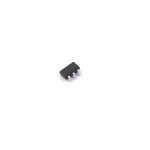Duplexers and Combiners: How They Work
You don’t need to be an engineer to understand how these two devices handle signals—just think of them like plumbing or traffic systems.
Combiners: The Signal Blender
A combiner takes multiple signals and smashes them together into one line.
-
It’s like…
-
Mixing ketchup and mustard in the same squeeze bottle—once they’re in, you can’t separate them.
-
Pouring two rivers into one—the waters merge and flow as one.
-
-
Where you’ll find it:
-
Radio stations combining music and ads into a single broadcast.
-
Cell towers merging signals from different antennas.
-
-
The catch: Once combined, the signals can’t be split back easily.
Duplexers: The Two-Way Signal Highway
A duplexer lets two signals travel in opposite directions without crashing into each other.
-
It’s like…
-
A train track with two lanes—trains go both ways without colliding.
-
A revolving door: people enter and exit at the same time, smoothly.
-
-
Where you’ll find it:
-
Walkie-talkies (you can talk and listen at the same time).
-
Your smartphone (sending texts while downloading a video).
-
-
The trick: It uses filters to keep signals from interfering.
Side-by-Side: Combiner vs. Duplexer
| Combiner | Duplexer |
|---|---|
| Mixes signals like a blender | Keeps signals separate like a divided highway |
| One-way flow | Two-way flow |
| Simple merging | Smart isolation |
| Used in broadcasting | Used in two-way communication |
Why Does This Matter?
Without combiners, every signal would need its own wire—like having separate pipes for hot and cold water instead of a single faucet.
Without duplexers, devices like phones couldn’t send and receive data at the same time—you’d have to take turns like a walkie-talkie.
So next time you make a call or stream music, remember: these little gadgets are the reason it all works smoothly.




